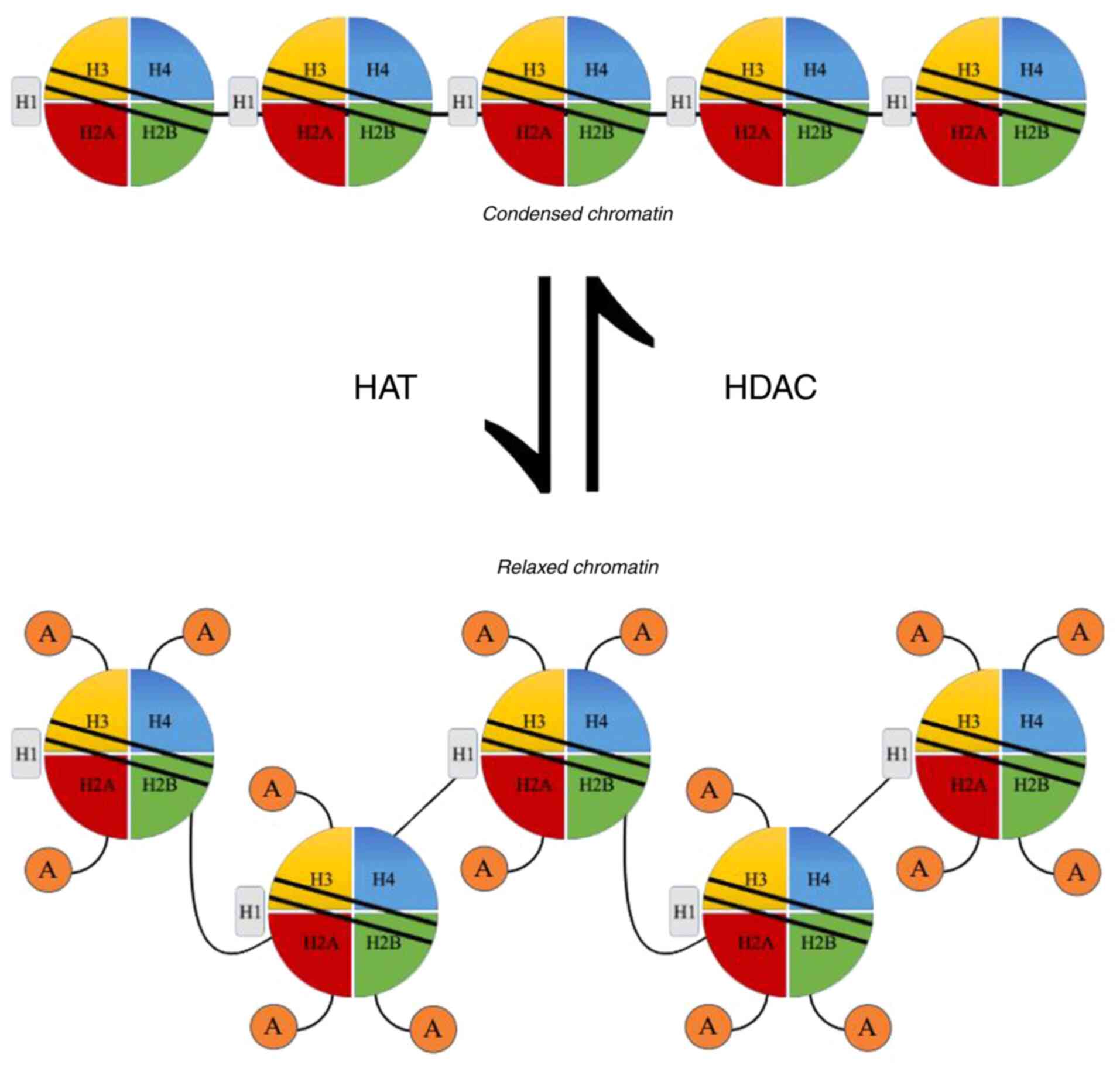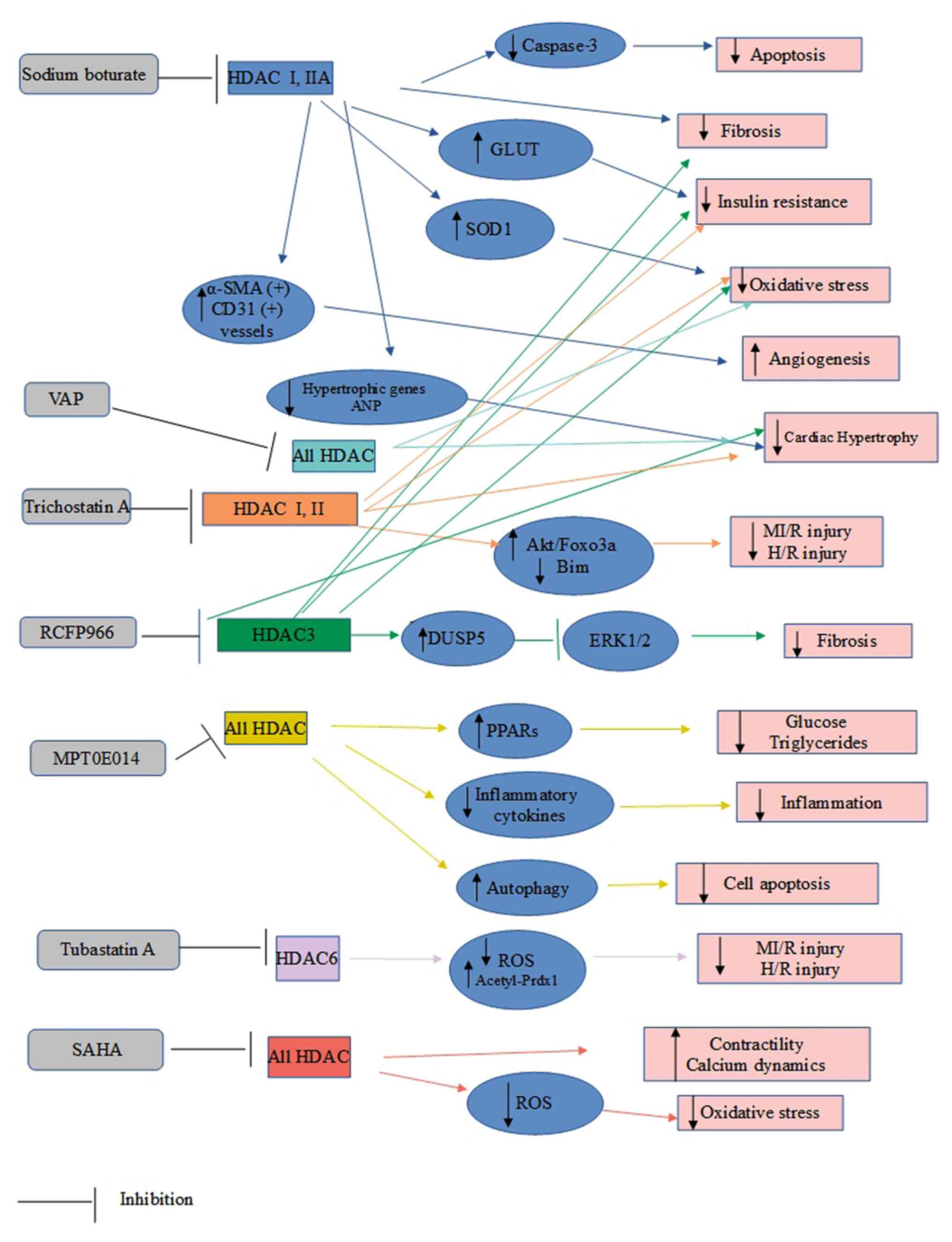|
1
|
Wang Y, Yang H, Huynh Q, Nolan M, Negishi
K and Marwick TH: Diagnosis of nonischemic stage B heart failure in
type 2 diabetes mellitus. JACC Cardiovasc Imaging. 11:1390–1400.
2018.PubMed/NCBI View Article : Google Scholar
|
|
2
|
Hölscher ME, Bode C and Bugger H: Diabetic
cardiomyopathy: Does the type of diabetes matter? Int J Mol Sci.
17(2136)2016.PubMed/NCBI View Article : Google Scholar
|
|
3
|
Yilmaz S, Canpolat U, Aydogdu S and Abboud
HE: Diabetic cardiomyopathy; Summary of 41 years. Korean Circ J.
45:266–272. 2015.PubMed/NCBI View Article : Google Scholar
|
|
4
|
Avogaro A, de Kreutzenberg SV, Negut C,
Tiengo A and Scognamiglio R: Diabetic cardiomyopathy: A metabolic
perspective. Am J Cardiol. 93:13A–16A. 2004.PubMed/NCBI View Article : Google Scholar
|
|
5
|
Jia G, Hill MA and Sowers JR: Diabetic
cardiomyopathy: An update of mechanisms contributing to this
clinical entity. Circ Res. 122:624–638. 2018.PubMed/NCBI View Article : Google Scholar
|
|
6
|
Dinarello CA: Anti-inflammatory agents:
Present and future. Cell. 140:935–950. 2010.PubMed/NCBI View Article : Google Scholar
|
|
7
|
Zhang L, Du J, Yano N, Wang H, Zhao YT,
Dubielecka PM, Zhuang S, Chin YE, Qin G and Zhao TC: Sodium
butyrate protects-against high fat diet-induced cardiac dysfunction
and metabolic disorders in type II diabetic mice. J Cell Biochem.
118:2395–2408. 2017.PubMed/NCBI View Article : Google Scholar
|
|
8
|
Jia G, Whaley-Connell A and Sowers JR:
Diabetic cardiomyopathy: A hyperglycaemia- and
insulin-resistance-induced heart disease. Diabetologia. 61:21–28.
2018.PubMed/NCBI View Article : Google Scholar
|
|
9
|
Dhingra R and Vasan RS: Diabetes and the
risk of heart failure. Heart Fail Clin. 8:125–133. 2012.PubMed/NCBI View Article : Google Scholar
|
|
10
|
Rosano GM, Vitale C and Seferovic P: Heart
failure in patients with diabetes mellitus. Card Fail Rev. 3:52–55.
2017.PubMed/NCBI View Article : Google Scholar
|
|
11
|
Marwick TH, Ritchi R, Shaw JE and Kaye D:
Implications of underlying mechanisms for the recognition and
management of diabetic cardiomyopathy. J Am Coll Cardiol.
71:339–351. 2018.PubMed/NCBI View Article : Google Scholar
|
|
12
|
Serhiyenko VA and Serhiyenko AA: Cardiac
autonomic neuropathy: Risk factors, diagnosis and treatment. World
J Diabetes. 9:1–24. 2018.PubMed/NCBI View Article : Google Scholar
|
|
13
|
Levelt E, Rodgers CT, Clarke WT, Mahmod M,
Ariga R, Francis JM, Liu A, Wijesurendra RS, Dass S, Sabharwal N,
et al: Cardiac energetics, oxygenation, and perfusion during
increased workload in patients with type 2 diabetes mellitus. Eur
Heart J. 37:3461–3469. 2016.PubMed/NCBI View Article : Google Scholar
|
|
14
|
Garmpi A, Garmpis N, Damaskos C, Valsami
S, Spartalis E, Lavaris A, Patelis N, Margonis GA, Apostolou KG,
Spartalis M, et al: Histone deacetylase inhibitors as a new
anticancer option: How far can we go with expectations? J BUON.
23:846–861. 2018.PubMed/NCBI
|
|
15
|
Seto E and Yoshida M: Erasers of histone
acetylation: The histone deacetylase enzymes. Cold Spring Harb
Perspect Biol. 6(a018713)2014.PubMed/NCBI View Article : Google Scholar
|
|
16
|
Zwergel C, Stazi G, Valente S and Mai A:
Histone deacetylase inhibitors: Updated studies in various
epigenetic-related diseases. J Clin Epigenet. 2(1)2016.
|
|
17
|
Garmpis N, Damaskos C, Garmpi A, Nonni A,
Georgakopoulou VE, Antoniou E, Schizas D, Sarantis P, Patsouras A,
Syllaios A, et al: Histone deacetylases and their inhibitors in
colorectal cancer therapy: Current evidence and future
considerations. Curr Med Chem. 29:2979–2994. 2022.PubMed/NCBI View Article : Google Scholar
|
|
18
|
Garmpis N, Damaskos C, Garmpi A,
Georgakopoulou VE, Sarantis P, Antoniou EA, Karamouzis MV, Nonni A,
Schizas D, Diamantis E, et al: Histone deacetylase inhibitors in
the treatment of hepatocellular carcinoma: Current evidence and
future opportunities. J Pers Med. 11(223)2021.PubMed/NCBI View Article : Google Scholar
|
|
19
|
Damaskos C, Garmpis N, Karatzas T,
Nikolidakis L, Kostakis ID, Garmpi A, Karamaroudis S, Boutsikos G,
Damaskou Z, Kostakis A and Kouraklis G: Histone deacetylase (HDAC)
inhibitors: Current evidence for therapeutic activities in
pancreatic cancer. Anticancer Res. 35:3129–3135. 2015.PubMed/NCBI
|
|
20
|
Damaskos C, Garmpis N, Valsami S, Kontos
M, Spartalis E, Kalampokas T, Kalampokas E, Athanasiou A, Moris D,
Daskalopoulou A, et al: Histone deacetylase inhibitors: An
attractive therapeutic strategy against breast cancer. Anticancer
Res. 37:35–46. 2017.PubMed/NCBI View Article : Google Scholar
|
|
21
|
Garmpis N, Damaskos C, Garmpi A,
Kalampokas E, Kalampokas T, Spartalis E, Daskalopoulou A, Valsami
S, Kontos M, Nonni A, et al: Histone deacetylases as new
therapeutic targets in triple-negative breast cancer: Progress and
promises. Cancer Genomics Proteomics. 14:299–313. 2017.PubMed/NCBI View Article : Google Scholar
|
|
22
|
Damaskos C, Garmpis N, Valsami S,
Spartalis E, Antoniou EA, Tomos P, Karamaroudis S, Zoumpou T,
Pergialiotis V, Stergios K, et al: Histone deacetylase inhibitors:
A novel therapeutic weapon against medullary thyroid cancer?
Anticancer Res. 36:5019–5024. 2016.PubMed/NCBI View Article : Google Scholar
|
|
23
|
Spartalis E, Athanasiadis DI, Chrysikos D,
Spartalis M, Boutzios G, Schizas D, Garmpis N, Damaskos C, Paschou
SA, Ioannidis A, et al: Histone deacetylase inhibitors and
anaplastic thyroid carcinoma. Anticancer Res. 39:1119–1127.
2019.PubMed/NCBI View Article : Google Scholar
|
|
24
|
Damaskos C, Tomos I, Garmpis N,
Karakatsani A, Dimitroulis D, Garmpi A, Spartalis E, Kampolis CF,
Tsagkari E, Loukeri AA, et al: Histone deacetylase inhibitors as a
novel targeted therapy against non-small cell lung cancer: Where
are we now and what should we expect? Anticancer Res. 38:37–43.
2018.PubMed/NCBI View Article : Google Scholar
|
|
25
|
Garmpis N, Damaskos C, Garmpi A, Spartalis
E, Kalampokas E, Kalampokas T, Margonis GA, Schizas D, Andreatos N,
Angelou A, et al: Targeting histone deacetylases in endometrial
cancer: A paradigm-shifting therapeutic strategy? Eur Rev Med
Pharmacol Sci. 22:950–960. 2018.PubMed/NCBI View Article : Google Scholar
|
|
26
|
Moschos MM, Dettoraki M, Androudi S,
Kalogeropoulos D, Lavaris A, Garmpis N, Damaskos C, Garmpi A and
Tsatsos M: The role of histone deacetylase inhibitors in uveal
melanoma: Current evidence. Anticancer Res. 38:3817–3824.
2018.PubMed/NCBI View Article : Google Scholar
|
|
27
|
Garmpis N, Damaskos C, Garmpi A,
Dimitroulis D, Spartalis E, Margonis GA, Schizas D, Deskou I, Doula
C, Magkouti E, et al: Targeting histone deacetylases in malignant
melanoma: A future therapeutic agent or just great expectations?
Anticancer Res. 37:5355–5362. 2017.PubMed/NCBI View Article : Google Scholar
|
|
28
|
Gray SG: Epigenetic treatment of
neurological disease. Epigenomics. 3:431–450. 2011.PubMed/NCBI View Article : Google Scholar
|
|
29
|
Savi M, Bocchi L, Sala R, Frati C,
Lagrasta C, Madeddu D, Falco A, Pollino S, Bresciani L, Miragoli M,
et al: Parenchymal and stromal cells contribute to pro-inflammatory
myocardial environment at early stages of diabetes: Protective role
of resveratrol. Nutrients. 8(729)2016.PubMed/NCBI View Article : Google Scholar
|
|
30
|
Bugger H and Abel ED: Molecular mechanisms
of diabetic cardiomyopathy. Diabetologia. 57:660–671.
2014.PubMed/NCBI View Article : Google Scholar
|
|
31
|
Chen Y, Du J, Zhao YT, Zhang L, Lv G,
Zhuang S, Qin G and Zhao TC: Histone deacetylase (HDAC) inhibition
improves myocardial function and prevents cardiac remodeling in
diabetic mice. Cardiovasc Diabetol. 14(99)2015.PubMed/NCBI View Article : Google Scholar
|
|
32
|
Lee TI, Kao YH, Tsai WC, Chung CC, Chen YC
and Chen YJ: HDAC inhibition modulates cardiac PPARs and fatty acid
metabolism in diabetic cardiomyopathy. PPAR Res.
2016(5938740)2016.PubMed/NCBI View Article : Google Scholar
|
|
33
|
Lee TI, Bai KJ, Chen YC, Lee TW, Chung CC,
Tsai WC, Tsao SY and Kao YH: Histone deacetylase inhibition of
cardiac autophagy in rats on a high-fat diet with low-dose
streptozotocin-induced type 2 diabetes mellitus. Mol Med Rep.
17:594–601. 2018.PubMed/NCBI View Article : Google Scholar
|
|
34
|
Wu Y, Leng Y, Meng Q, Xue R, Zhao B, Zhan
L and Xia Z: Suppression of excessive histone deacetylases activity
in diabetic hearts attenuates myocardial ischemia/reperfusion
injury via mitochondria apoptosis pathway. J Diabetes Res.
2017(8208065)2017.PubMed/NCBI View Article : Google Scholar
|
|
35
|
Ban K, Cooper AJ, Samuel S, Bhatti A,
Patel M, Izumo S, Penninger JM, Backx PH, Oudit GY and Tsushima RG:
Phosphatidylinositol 3-kinase gamma is a critical mediator of
myocardial ischemic and adenosine-mediated preconditioning. Circ
Res. 103:643–653. 2008.PubMed/NCBI View Article : Google Scholar
|
|
36
|
Leng Y, Wu Y, Lei S, Zhou B, Qiu Z, Wang K
and Xia Z: Inhibition of HDAC6 activity alleviates myocardial
ischemia/reperfusion injury in diabetic rats: Potential role of
peroxiredoxin 1 acetylation and redox regulation. Oxid Med Cell
Longev. 2018(9494052)2018.PubMed/NCBI View Article : Google Scholar
|
|
37
|
Xu Z, Tong Q, Zhang Z, Wang S, Zheng Y,
Liu Q, Qian LB, Chen SY, Sun J and Cai L: Inhibition of HDAC3
prevents diabetic cardiomyopathy in OVE26 mice via epigenetic
regulation of DUSP5-ERK1/2 pathway. Clin Sci (Lond). 131:1841–1857.
2017.PubMed/NCBI View Article : Google Scholar
|
|
38
|
Bocchi L, Motta BM, Savi M, Vilella R,
Meraviglia V, Rizzi F, Galati S, Buschini A, Lazzaretti M,
Pramstaller PP, et al: The histone deacetylase inhibitor
suberoylanilide hydroxamic acid (SAHA) restores cardiomyocyte
contractility in a rat model of early diabetes. Int J Mol Sci.
20:1873–1885. 2019.PubMed/NCBI View Article : Google Scholar
|
|
39
|
Bagshi RA and Weeks KL: Histone
deacetylases in cardiovascular and metabolic diseases. J Mol Cell
Cardiol. 130:151–159. 2019.PubMed/NCBI View Article : Google Scholar
|
|
40
|
Larsen L, Tonnesen M, Ronn SG, Størling J,
Jørgensen S, Mascagni P, Dinarello CA, Billestrup N and
Mandrup-Poulsen T: Inhibition of histone deacetylases prevents
cytokine-induced toxicity in beta cells. Diabetologia. 50:779–789.
2007.PubMed/NCBI View Article : Google Scholar
|
|
41
|
Bogaard HJ, Mizuno S, Hussaini AA, Toldo
S, Abbate A, Kraskauskas D, Kasper M, Natarajan R and Voelkel NF:
Suppression of histone deacetylases worsens right ventricular
dysfunction after pulmonary artery banding in rats. Am J Respir
Crit Cure Med. 183:1402–1410. 2011.PubMed/NCBI View Article : Google Scholar
|
|
42
|
Hur KY, Jung HS and Lee MS: Role of
autophagy in β-cell function and mass. Diabetes Obes Metab. 2 (12
Suppl):S20–S26. 2010.PubMed/NCBI View Article : Google Scholar
|
|
43
|
Weems J and Olson AL: Class II histone
deacetylases limit GLUT4 gene expression during adipocyte
differentiation. J Biol Chem. 286:460–468. 2011.PubMed/NCBI View Article : Google Scholar
|
|
44
|
Thai MV, Guruswamy S, Cao KT, Pessin JE
and Olson AL: Myocyte enhancer factor 2 (MEF2)-binding site is
required for GLUT4 gene expression in transgenic mice. Regulation
of MEF2 DNA binding activity in insulin-deficient diabetes. J Biol
Chem. 273:14285–14292. 1998.PubMed/NCBI View Article : Google Scholar
|
|
45
|
Shao D and Tian R: Glucose transporters in
cardiac metabolism and hypertrophy. Compr Physiol. 6:331–351.
2015.PubMed/NCBI View Article : Google Scholar
|
|
46
|
Kao YH, Liou JP, Chung CC, Lien GS, Kuo
CC, Chen SA and Chen YJ: Histone deacetylase inhibition improved
cardiac functions with direct antifibrotic activity in heart
failure. Int J Cardiol. 168:4178–4183. 2013.PubMed/NCBI View Article : Google Scholar
|
















